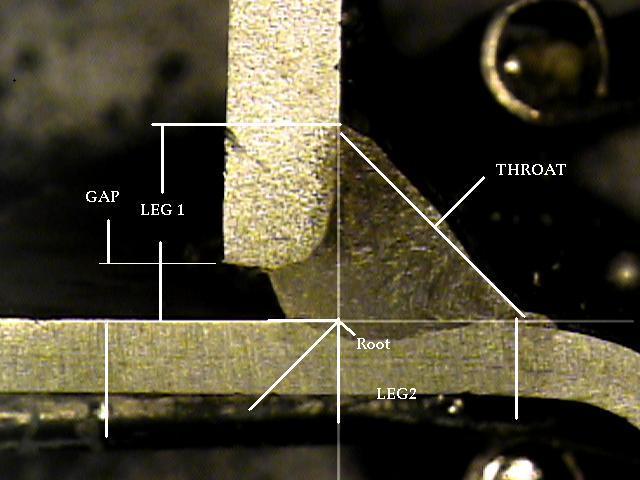The Relevance of Thorough Welding Examination in Industrial Applications
In the realm of commercial applications, the significance of careful welding assessment can not be overemphasized. As we discover the diverse advantages of attentive welding inspections, one must take into consideration the broader effects on security, reliability, and cost-effectiveness in commercial procedures.
Enhancing Structural Honesty
When it comes to welding evaluation in industrial applications, improving architectural integrity is paramount. The primary objective of welding examination is to ensure that the welds are qualified of birthing the anticipated loads and anxieties they will run into in service.
The significance of keeping structural integrity in bonded structures can not be overemphasized. Poorly executed welds can bring about devastating failings, leading to costly fixings, downtime, and also endangerment of human lives. Assessors play a crucial function in the lifecycle of commercial elements, giving assurance that the welding process supplies the wanted toughness and longevity.
Moreover, progressed modern technologies, such as phased range ultrasonic screening and electronic radiography, offer improved capabilities in spotting prospective weaknesses, permitting restorative actions before problems escalate. By prioritizing the honesty of welds via careful examination, industries can make sure operational efficiency and extend the longevity of their framework.
Determining Welding Flaws
Recognizing welding problems is an essential aspect of making sure the security and integrity of welded structures. Usual welding flaws consist of porosity, cracks, insufficient combination, and undercutting.

Knowledgeable examiners utilize both aesthetic assessment and advanced non-destructive screening (NDT) approaches, such as ultrasonic or radiographic testing, to identify these issues. The timely identification and rectification of welding issues are critical to keep the structural integrity and long life of commercial components.
Guaranteeing Compliance Criteria
Conformity with well-known standards, such as those given by the American Welding Culture (AWS) and the International Organization for Standardization (ISO), makes sure that welds meet minimal security and top quality requirements. These requirements encompass a broad variety of criteria, including product requirements, welding treatments, and credentials of welders.
Normal audits and assessments are important in validating compliance. Examiners have to possess an extensive understanding of the appropriate criteria and be proficient at utilizing various non-destructive screening (NDT) techniques to assess weld top quality. By guaranteeing that welding practices align with compliance requirements, companies alleviate the threat of non-conformity, which can bring about legal responsibilities and safety and security threats.
Additionally, maintaining conformity not only safeguards structural honesty however additionally enhances a firm's credibility in the industry. Stakeholders and customers are most likely to trust firms that continually show a commitment to quality and safety through strenuous compliance. Hence, making certain conformity requirements is an important component in the successful application of welding in industrial applications.
Minimizing Maintenance Prices

The application of sophisticated non-destructive testing (NDT) approaches, consisting of ultrasonic, radiographic, and magnetic bit examinations, enhances the capability to detect subsurface problems without compromising the structural integrity of elements. By employing these techniques, industries can substantially expand the solution life of their equipment, minimizing downtime and the connected economic concern of maintenance tasks.
Additionally, a durable welding examination regime supports the optimization of upkeep schedules, moving from reactive to predictive upkeep methods. This positive approach not only curtails unexpected failings however also enhances source appropriation, ensuring that upkeep initiatives are focused and effective. Inevitably, the financial investment in strenuous welding assessment is countered by the substantial financial savings recognized through decreased maintenance needs, adding favorably to the general functional effectiveness of industrial business.
Improving Precaution
Although safety and security is a paramount issue in commercial operations, accomplishing optimum safety and security requirements requires a devoted focus on the quality and reliability of welded structures. Welding evaluation plays a vital function in this context, as it makes sure that all links and joints meet stringent safety and security criteria. Comprehensive inspections aid recognize flaws such as splits, porosity, or incomplete fusion that might endanger architectural integrity. Such defects, if left unaddressed, position considerable threats, possibly resulting in devastating failings.
To enhance precaution, adopting sophisticated non-destructive screening (NDT) techniques is necessary. Techniques like ultrasonic testing, radiographic testing, and magnetic particle assessment enable for thorough evaluation without harming the structure. These innovations enable inspectors to spot surprise flaws early in the construction process, promoting timely restorative activities. Additionally, my review here implementing a durable quality assurance system that includes normal training for welders and inspectors guarantees adherence to developed safety and security criteria.
Finally, fostering a culture of safety within the organization emphasizes the relevance of comprehensive welding evaluations. Urging open interaction and partnership amongst examiners, designers, and welders adds to a shared dedication to safety and security quality. Welding Inspection Madison. hop over to these guys In doing so, sectors can secure their operations, shield personnel, and preserve public trust fund

Verdict
Detailed welding examination is crucial in industrial applications, significantly boosting structural honesty and reliability. Eventually, the persistent execution of welding inspections plays an essential function in preserving operational effectiveness and safety and security in commercial setups.
As we explore the multifaceted benefits of persistent welding assessments, one must think about the broader implications on safety, reliability, and cost-effectiveness in industrial operations.
The primary objective of welding inspection is to guarantee that the welds are qualified of bearing the anticipated stress and anxieties and tons they will certainly come across in solution. Effective welding examination plays an essential function in decreasing these prices by making sure the honesty and durability of welds, thus reducing the danger of premature failures.Extensive welding inspection is vital in commercial applications, substantially enhancing architectural honesty and reliability. Inevitably, the thorough implementation of welding assessments plays an essential role in maintaining operational performance and safety and security in commercial setups.